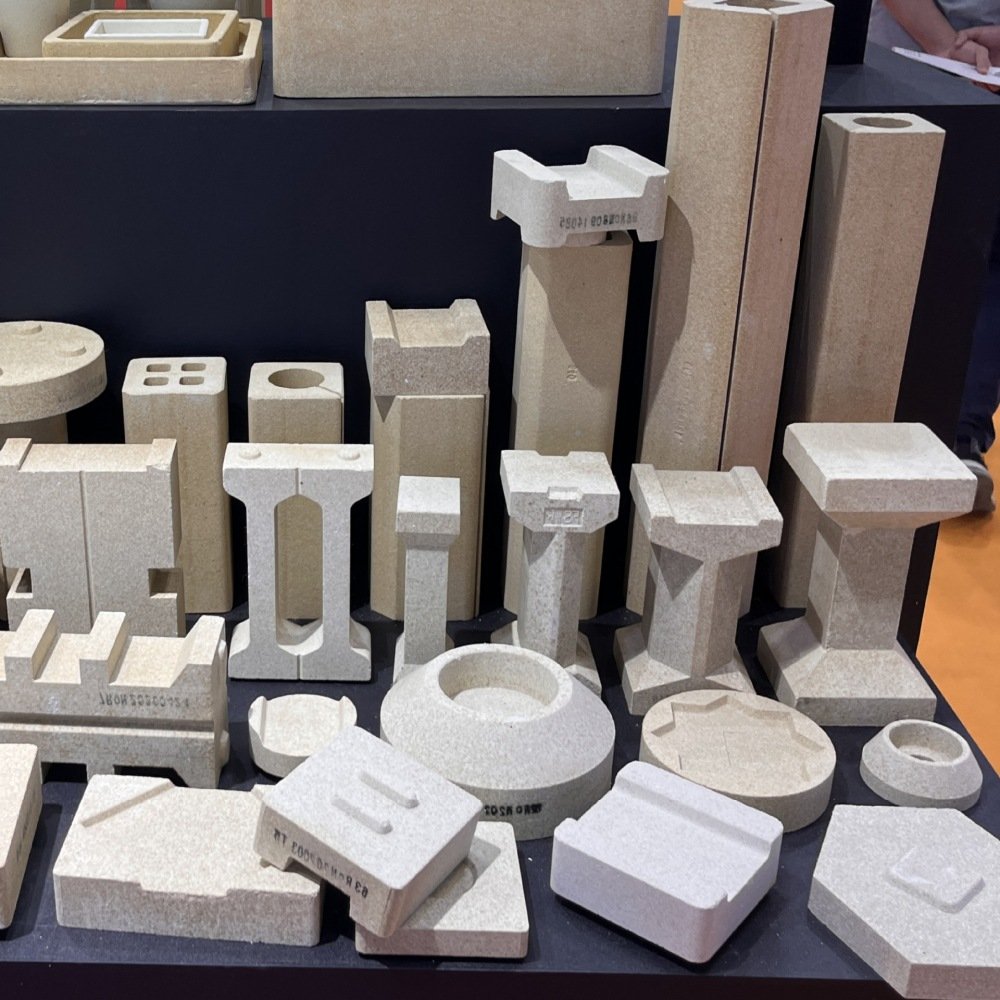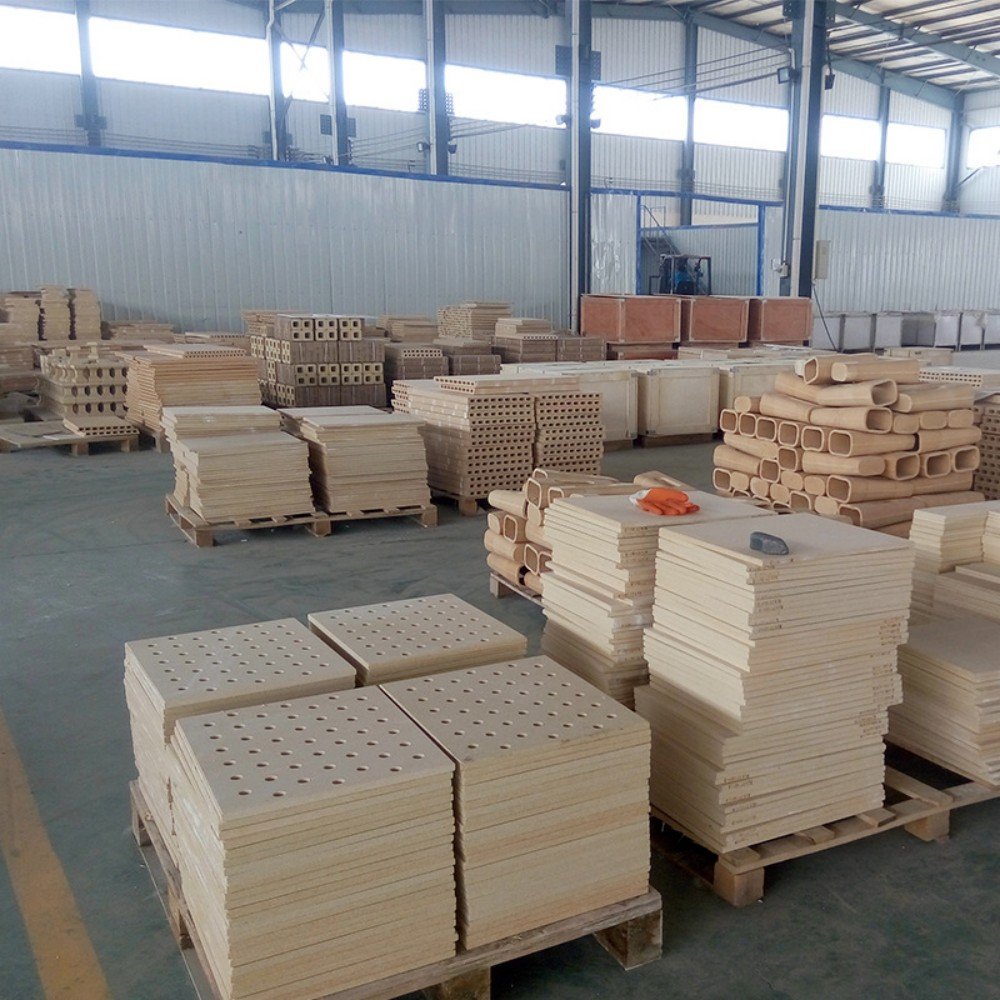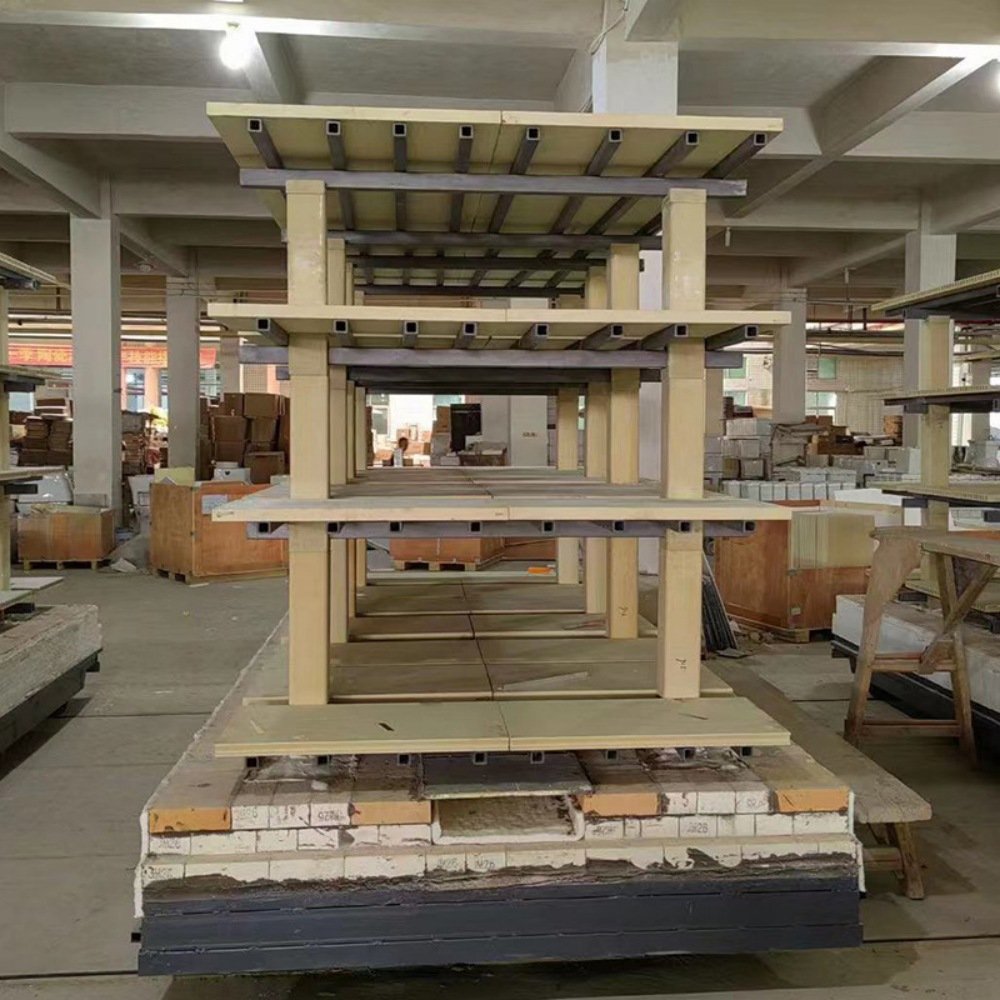Refractory kiln furniture is a critical component in high-temperature industries. Common materials include silicon carbide (SiC), alumina, mullite, and cordierite, each selected for properties like heat resistance, corrosion resistance, low thermal expansion, or lightweight design. Key types include kiln posts (vertical support), shelves (horizontal load-bearing), saggars (contamination isolation), pusher plates (product transport), and setter plates (direct workpiece holding). These components are widely used in sintering ceramics, glass, and electronics, protecting products from extreme heat while enhancing energy efficiency through optimized kiln design, ensuring both process reliability and product quality.



The Kiln Furniture Accessories possess a variety of crucial functions during the kiln firing process. Mainly, they include the following aspects:
Support and Fixation: Accessories like pillars and supports are utilized to uphold kiln furniture and the items being fired, ensuring that they are in the correct positions within the kiln. This prevents collapse due to high-temperature deformation or gravitational forces, guaranteeing the stability and safety of the firing process.
Connection and Fastening: Connecting clamps, bolts and other such accessories can tightly bind different components of the kiln furniture together, making the entire kiln furniture structure a stable entity. They resist the thermal and mechanical stresses in the high-temperature environment of the kiln, averting the loosening or detachment of parts that could otherwise impact the firing effect.
Adjustment and Positioning: Positioning shims, adjusting blocks and similar accessories can precisely modify the spacing, angles, and positions among kiln furniture components. This ensures that the items being fired are heated evenly in the kiln, optimizing heat transfer and air flow distribution, and enhancing the quality and consistency of the fired products.
Sealing and Protection: Sealing rings, fire baffles and other accessories play the role of sealing the kiln space. They prevent hot air leakage, reducing heat loss, and at the same time, block the entry of external impurities and air into the kiln. This avoids contaminating or oxidizing the fired items, creating a stable and pure environment for the firing process.
Auxiliary Heat Transfer: Some kiln furniture accessories with excellent thermal conductivity, such as heat conduction plates and heat transfer rods, can assist in guiding and evenly distributing heat. They improve the uniformity of the temperature inside the kiln, enabling all parts of the item being fired to receive sufficient and even heating, thereby ameliorating the firing quality and minimizing defects.
Protecting Kiln Furniture and Products: For example, kiln furniture coatings, protective pads and other accessories can form an isolation layer between the kiln furniture and the items being fired. This prevents direct contact between the two, avoiding products from sticking to the kiln furniture, and also protects the kiln furniture from high-temperature erosion and chemical corrosion, prolonging its service life.







